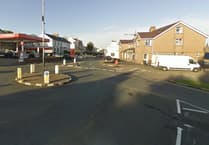Once again hopes are being raised in Tynwald that a large ‘vacant quarter’ in the heart of our capital city will be beneficially redeveloped (Isle of Man Courier, July 14).
The area between North Quay, Parade Street, Lord Street, and some of the oldest surviving fabric of the city formed the core of a demolition site largely created by Douglas Corporation during the 1920s for sanitary reasons, road improvements, and other purposes.
The accepted account tells of the former population being offered new houses in Pulrose, built for them by the corporation.
It may not be generally known that the bus station occupied much the same site as the ‘original’ settlement of Douglas.
This included a few house-sites linked with a possible promontory fort defending the harbour and an adjoining chapel and field.
A harbour-side strip here later became crammed with uninhabited rooms built from the late 1400s onwards for seasonal use by prosperous officials, farmers, and clergy living elsewhere.
This formed the next phase in the evolution of our capital as a non-urban port.
The gist of this account was due to be included in the long- and anxiously-awaited volume four of the New History of the Isle of Man.
My input to this work was requested in 1994 but silence surrounds the current delay of several years in publication while it seems most of the text has been ready for publication.
Exacerbating the absence of an available modern account of the city’s origins, no archaeological ‘dig’ has ever been carried out to investigate the site of early Douglas – this despite the land being virtually clear of permanent buildings for a century.
Official awareness of these circumstances has been very patchy but as a minimum the position needs flagging up in policy documents, discussion in all planning applications, and incorporation in planning conditions.
Architectural references to the long-lost historic fabric are a different issue.
It seems unfair, unsatisfactory, and disincentivising to pile such a burden of expectations onto prospective developers. It is also inefficient to let the timescale for even minimal investigations become telescoped into a narrow interval before development commences.
The Isle of Man Natural History and Antiquarian Society knows where there are areas of the site relatively free from destruction by cellars, drains, foundations, legendary tunnels, and the like.
Now we need to put together a fund amalgamating potential contributions from all sectors and secure the advice, permission, and involvement of Manx National Heritage in a timely and well-designed programme of archaeological investigation.
Will the city of Douglas remain totally in the historical shadow of its opposite number?
Admittedly the heritage awareness, amazing artefacts, contemporary documentation, and reported excavation campaigns enjoyed by Peel set a demanding goal!
Nigel Crowe
Victoria Road
Douglas
This letter was first published in the Isle of Man Examiner on July 25.
Share your views with our readers.
Write to: Opinions, Isle of Man Examiner and Manx Independent, 18 Finch Road, Douglas, IM1 2PT or email:
Don’t forget to include your name, FULL home address and a daytime phone number even if you want to be anonymous in print.




